Tyan Thunder SX GT90-B7113 Test Configuration
For our solution we had a fairly basic configuration:
- System: Tyan Thunder SX GT90-B7113
- CPU: 2x Intel Xeon Gold 6230R
- Memory: 12x 32GB DDR4-2933 ECC RDIMMs (384GB total)
- Networking: 1x Broadcom 25GbE OCP 2.0 NIC
- SSD: 4x Samsung PM983 1.92TB
- HDD: 12x WD Red Pro 14TB SATA (1x WD 12TB drive used for photos)
We are using higher-end Xeon Gold refresh SKUs. With the new Big 2nd Gen Intel Xeon Scalable Refresh we get much better pricing on this type of CPU which may cause scale-out storage folks to get higher-end CPUs than in previous years. Here is what the block diagram looks like for this server:
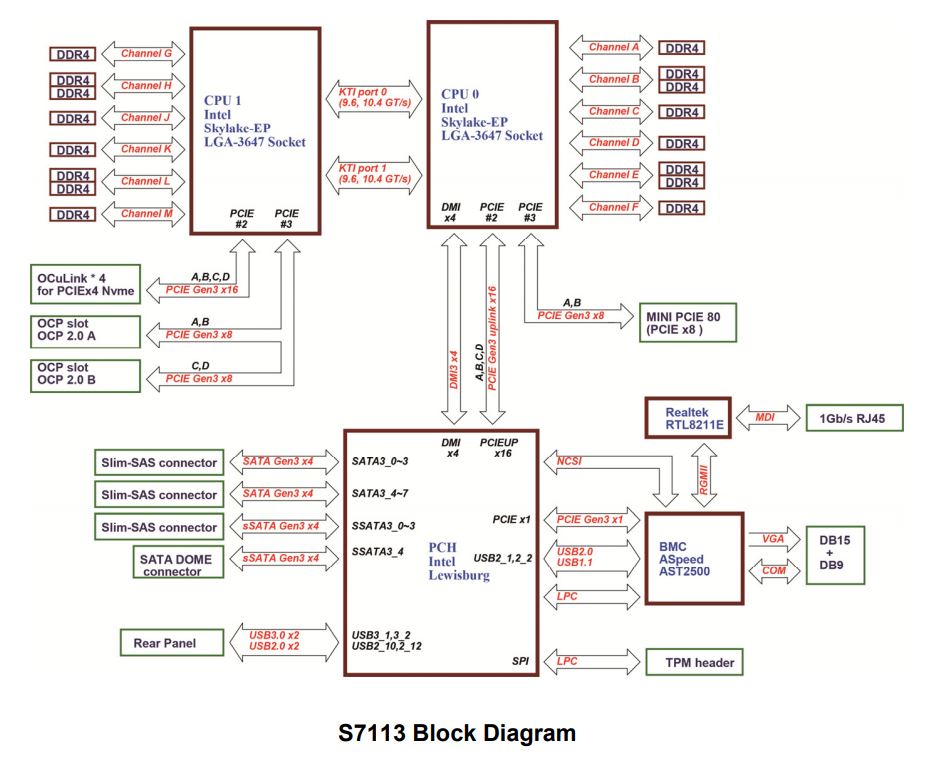
Perhaps the most interesting aspect is that Tyan is using all 48x lanes, but there are additional x16 lanes going to the Lewisburg PCH which provides a lot of bandwidth. Some servers have no additional PCIe lanes going to the PCH and some have eight lanes. This is a more robust 16x lane design which is likely because another use-case for the server is adding SATA drives connected directly to the PCH in another variant of the server.
Tyan Thunder SX GT90-B7113 Management
The Tyan web management interface uses the newer MegaRAC SP-X solution as a base. This is becoming the industry standard management solution that many vendors are adopting and adapting for their platforms.
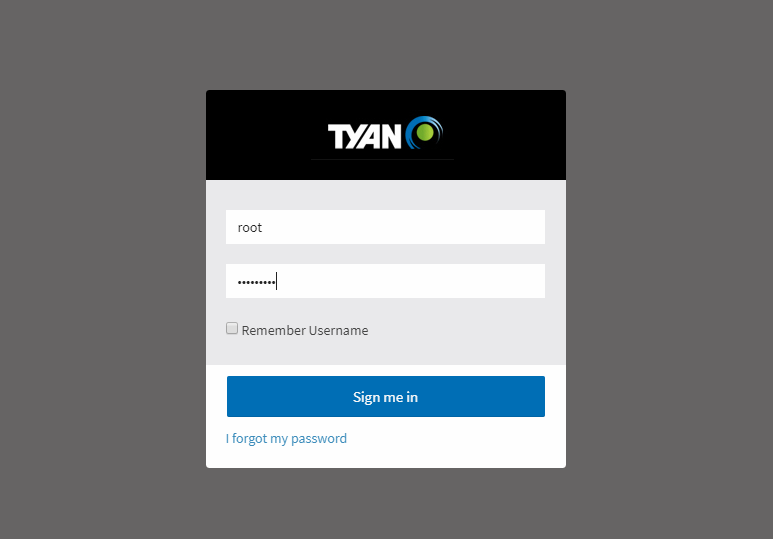
Tyan’s version has a number of customizations. One item that we surprisingly liked was the simple dashboard. Many vendors use overly complex dashboards with many status indicators but the performance of the dashboard is much worse in those implementations. Tyan’s implementation is relatively fast among SP-X implementations we have used.
One can see features such as sensor readings with temperatures, voltages, fan speeds, power consumption, and other metrics. These sensor readings are displayed on the web interface but are really designed to be consumed by data center monitoring and management packages.
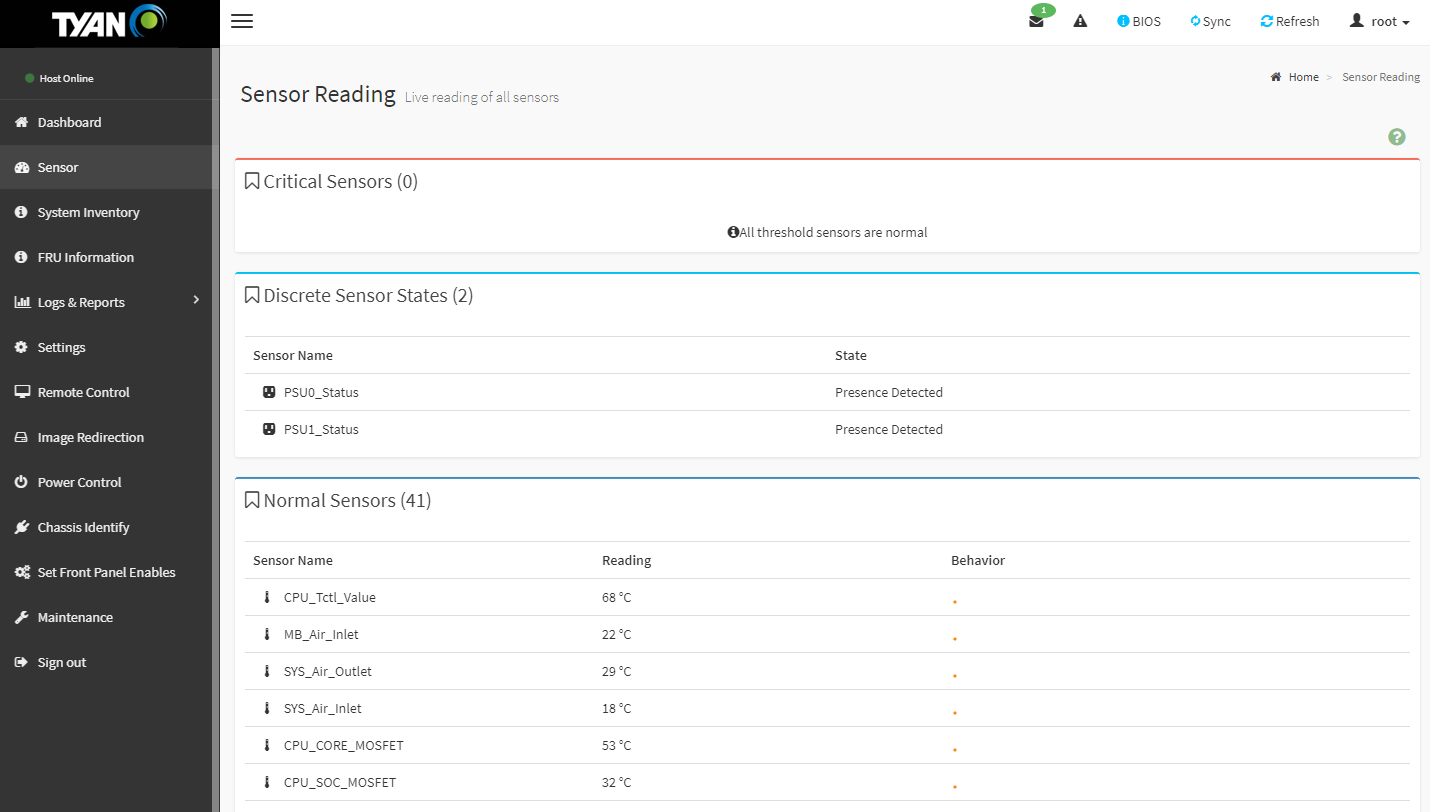
Changing various settings is relatively straightforward. The new HTML5 interface is even easy to navigate on phones and tablets. This is an enormous ease-of-use upgrade versus the last time we looked at the interface in our 2011-era Tyan IPMI 2.0 Remote Management WebGUI Tour.
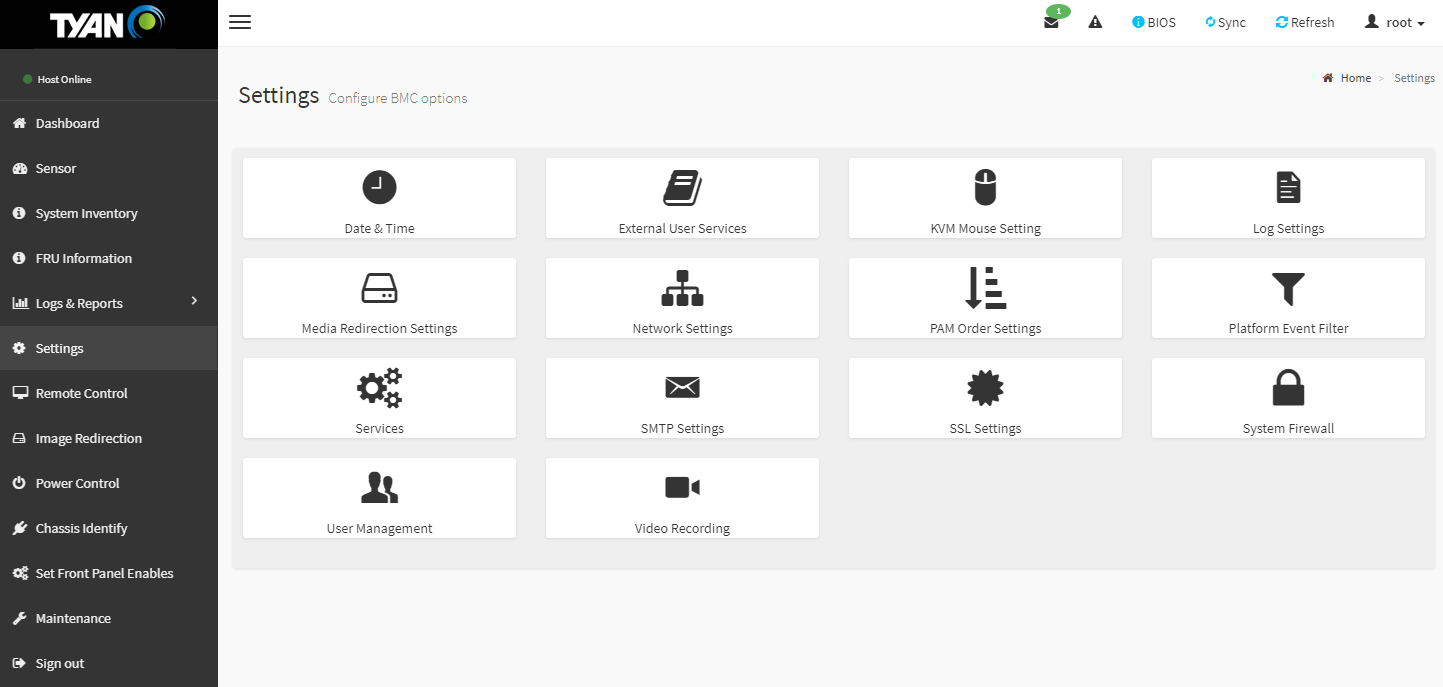
Remote iKVM features are included with this solution. That is something that vendors such as Dell EMC, HPE, and Lenovo offer at an additional cost on their servers. Tyan still offers the Java iKVM but now has a HTML5 version in their solution. The HTML5 version we tested does not have remote image mounting enabled, but not all vendors (e.g. Supermicro) have that feature parity on their new HTML5 iKVM suites.
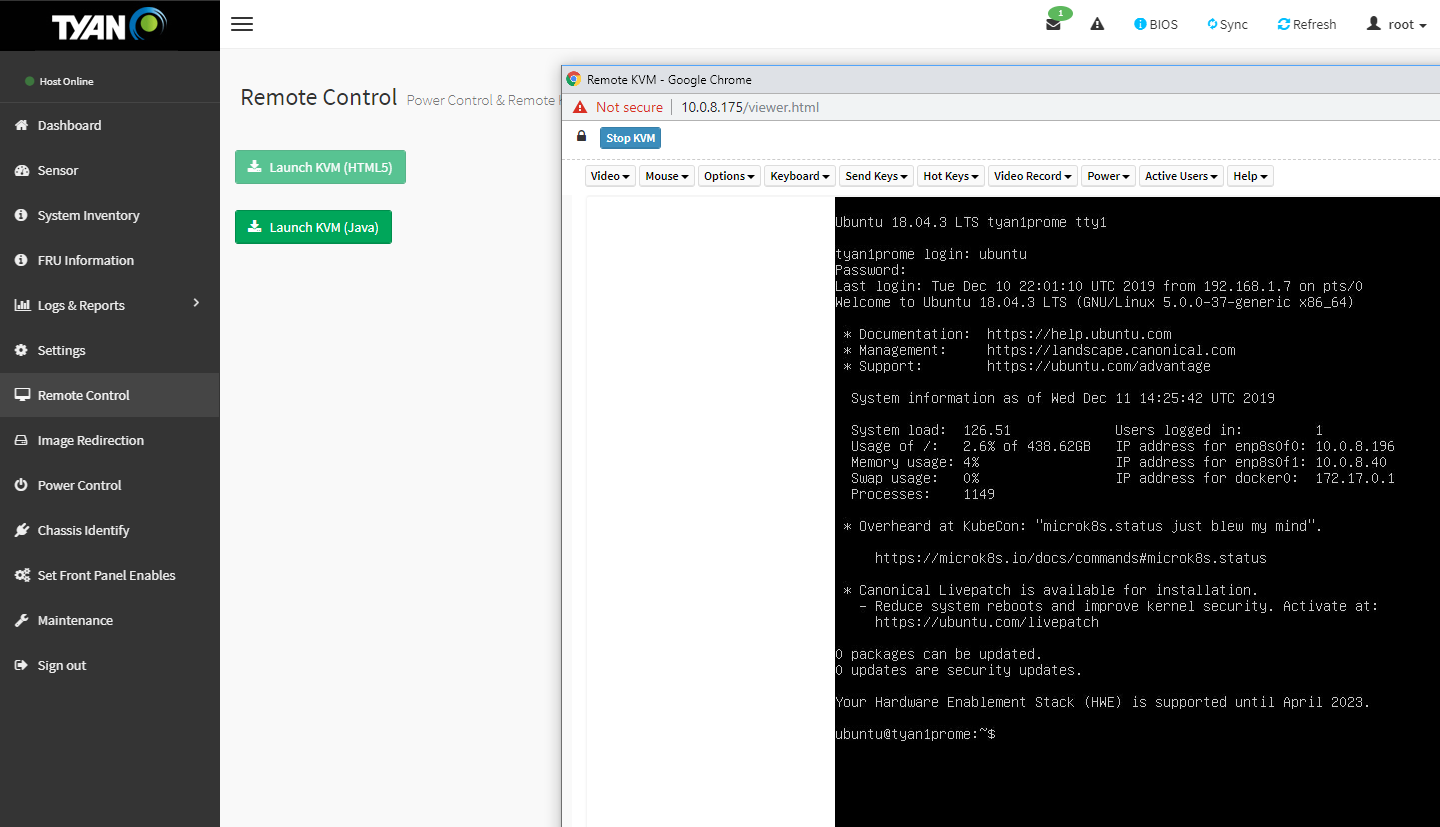
Based on comments in our previous articles, many of our readers have not used a Tyan server and therefore have not seen the management interface. We have a 7-minute video clicking through the interface and doing a quick tour of the Tyan management interface:
It is certainly not the most entertaining subject, however, if you are considering these systems, you may want to know what the web management interface is on each machine and that tour can be helpful.
Next, we are going to move onto the performance of the server.




Considering the rail design. and warning sticker, does the server feel like it might tip forward with a fully loaded drive sled pulled out all the way, if there’s nothing above it?
This design does look cool, especially with the 900mm depth. I’m a little shocked you didn’t mention the lack of hot-swap fans (and how that’s fine.)
That server is an impressive piece of work. It would be more impressive with a single EPYC socket instead of two Xeon$ocket$.